PRESIDENTS AND
THE AMERICAN
ENVIRONMENT
Presidents and
the American
Environment
Otis L. Graham, Jr.

UNIVERSITY PRESS OF KANSAS
2015 by the University Press of Kansas
All rights reserved
Published by the University Press of Kansas (Lawrence, Kansas 66045), which was organized by the Kansas Board of Regents and is operated and funded by Emporia State University, Fort Hays State University, Kansas State University, Pittsburg State University, the University of Kansas, and Wichita State University
Library of Congress Cataloging-in-Publication Data
Graham, Otis L.
Presidents and the American environment / Otis L. Graham, Jr.
pages cm
Includes bibliographical references and index.
ISBN 978-0-7006-2098-2 (hardback)
ISBN 978-0-7006-2099-9 (ebook)
1. Environmental policyUnited StatesHistory. 2. Conservation of natural resourcesGovernment policyUnited States--History. 3. Environmental managementPolitical aspectsUnited StatesHistory. 4. National parks and reservesUnited StatesHistory. 5. PresidentsUnited States. I. Title.
GE180.G734 2015
363.705610973dc232015004141
British Library Cataloguing-in-Publication Data is available.
Printed in the United States of America
10 9 8 7 6 5 4 3 2 1
The paper used in this publication is recycled and contains 30 percent postconsumer waste. It is acid free and meets the minimum requirements of the American National Standard for Permanence of Paper for Printed Library Materials z39.48-1992.
Public opinion is everything. With it, nothing can fail. Without it nothing can succeed. He who molds public opinion goes deeper than he who enacts statutes and pronounces decisions.
Abraham Lincoln
CONTENTS
ACKNOWLEDGMENTS
I am grateful for research assistance from UNC history graduate students Scott Phillips, Rob Shapard, Carla Hoffman, and Matthew Lubin, and from Kris Smemo and Dustin Walker at the University of CaliforniaSanta Barbara (history). Invaluable readings and critical judgment came from James Banner, Sam Wells, Betty Koed, Jane DeHart, and Gareth Davies. At an early stage David Perry, Donald Lamm, Fred Woodward, and Bob Dallek offered astute assessments.
My daughter, Lakin, restored my working environment after surgery. My son, Wade, gave a historians wise and timely advice.
Carolyn Chapman began by making the words line up right and evolved into an indispensable editorial collaborator. To all my warmest thanks.
PRESIDENTS AND
THE AMERICAN
ENVIRONMENT
INTRODUCTION
The presidency is not merely an administrative office. That is the least of it. It is pre-eminently a place of moral leadership. All of our great Presidents were leaders of thought at times when certain historic ideas in the life of the nation had to be clarified.... Without leadership alert and sensitive to change, we... lose our way.
Franklin D. Roosevelt
A century and a half ago a new concern was heard among US intellectualsthat this bounteous new world was running out of the abundant resources that had drawn European and (involuntarily) African millions. An early voice was George Perkins Marsh, whose Man and Nature (1864) drew a large readership and much influence. Man is essentially a destructive power.... He has felled the forests... broken up the mountain reservoirs... torn the thin glebe [soil]... has ruthlessly warred on all the tribes of animated nature.
Marsh was one of the earliest voices of US conservation, a social reform movement beginning to organize for nature protection as the nineteenth century advanced. In 1890 a small but influential wildlife conservation organization, the Boone and Crockett Club, located in New York City, came to an important resolve at about the same time as a group of professional foresters. Natural resource/nature preservationists could not by their own efforts make a change they fervently wishedthe establishment of a system of national forests carved out of public lands in the West and providing protection and management for vital timber resources. Kindred spirits, less well organized, imagined more national parks based on the Yellowstone (1872) model.
The New Yorkbased forest preservationists needed the aid of the citizen serving as the president of the United States. They stirred themselves in 1891 to enlist the intervention of President Benjamin Harrison, who was asked to sign a bill into law and under its authority declare a few national forests. He did so, and at this unlikely place our multifaceted story began.
It goes on today, more than a century later, originally called conservation, then environmentalism, as social movement and government policy activity expanded beyond national forests, parks, and wildlife refuges to include a vast pollution-control effort at all governmental levels. The first president engaged in this new government commitment to nature protectionHarrison had to have this new policy area explained to him, which did not take long, as he was only asked to sign some papers preserving federal timberland. Counting from Harrison, twenty-two successive presidents (including Obama) have with varying degrees of enthusiasm engaged the expanding natural resource protection mission Harrison had accepted for what turned out to be a permanent stay (for environmental policy, not for Harrison) in and around the White House. A slight majority of the twenty-two over the years has aligned with the two energetic Roosevelts and helped make environmental policy a growing enterprise. A substantial minority of presidents resisted nature protective policy expansions over the course of the twentieth century but were only able to delay or weaken it.
Of the many historical accounts of environmentalism, some frame the story as a social movement, which it was and is; others frame it as the ideas of intellectuals such as Marsh, John Muir, John Burroughs, Aldo Leopold, and Rachel Carson, or some combination thereof. This book is built around presidents and federal policy, where there has been a rich environmental engagement ranging from Theodore Roosevelts establishment of the Pelican Island bird refuge when a lawyer in his office told him the US Constitution did not explicitly prohibit it, to Calvin Coolidge playing hide-and-seek games in the Oval Office while ignoring reports of coastal industrial pollution. Presidents have mattered, a little or a lot, as they used or resisted these new objectives and tools.
THE NEW NATIONS PUBLIC LANDS A FIRST CENTURY WITHOUT A NATIONAL VISION
If we ask when conservationthe original name for the broad concern to protect the US natural environment from damage and depletionarrived on the agenda of the federal government, and thus of presidents, we discover a surprise. It took a century after the founding of the nation. Sustained presidential engagement came not with George Washington, nor with the Thomas Jefferson who sent Meriwether Lewis and William Clark to map the resources of the West, nor with Abraham Lincoln, who mobilized the nation for the Civil War. The environmental protection enterprise in our national life and politics came to the presidents desk in the administration of a much smaller figure, Benjamin Harrison, elected in 1888. It was still there, and growing, for all his successors.


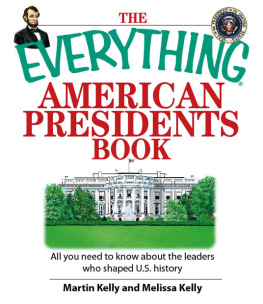
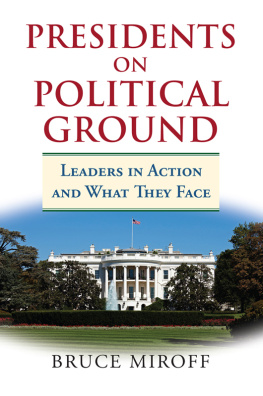
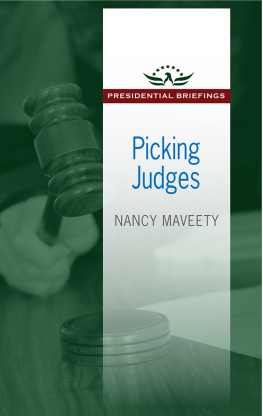
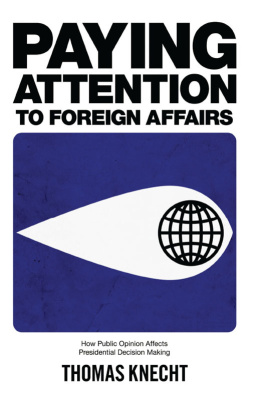

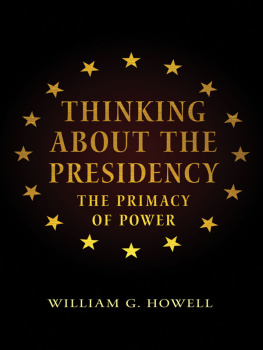
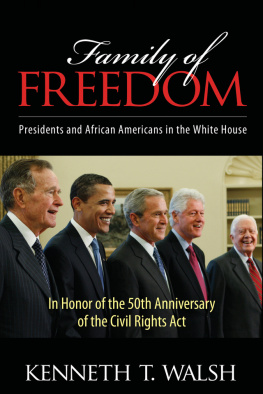
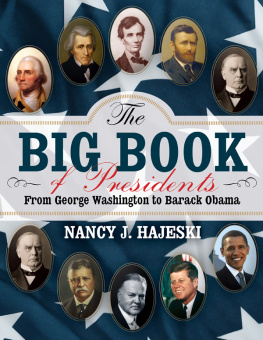
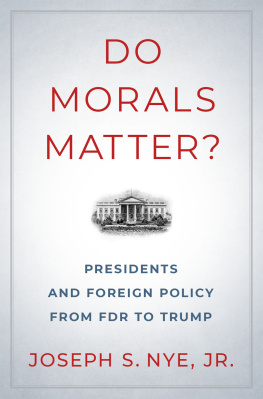
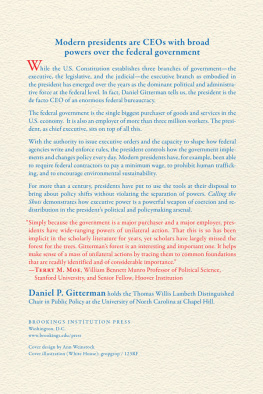

 UNIVERSITY PRESS OF KANSAS
UNIVERSITY PRESS OF KANSAS